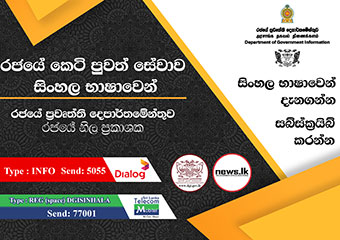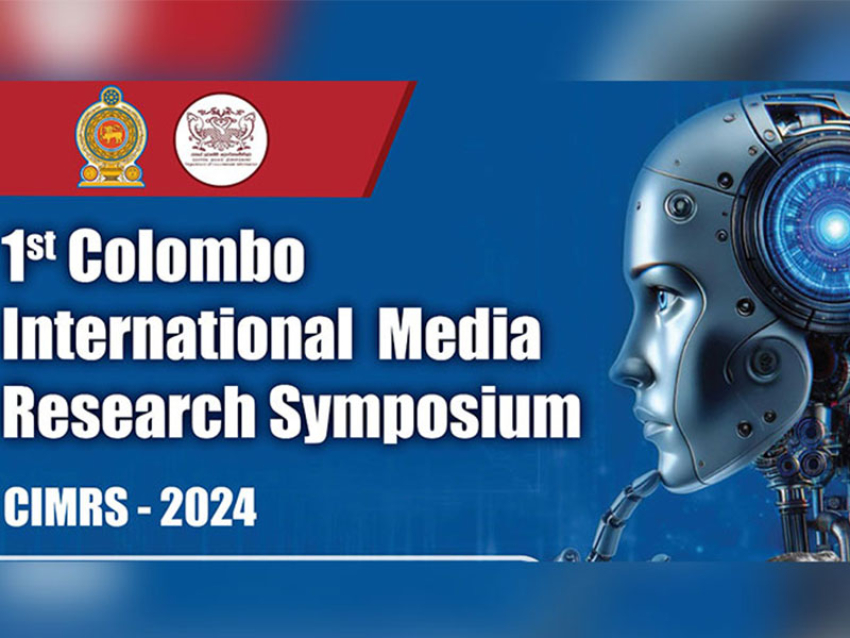Why progress bars can make you feel better
We are all familiar with the spinning wheels and download indicators that signify when our electronic devices are “working”, but are they making us fall for the “labour illusion”?
For a brief period of time in 2013, Samantha West was the hardest working employee of Premier Health Plans. She set up more deals than any other individual who worked at the insurance company. She was prolific – the chances are that if you made an enquiry, Samantha would be the person who gave you a call. And she did all of this while remaining infectiously upbeat and pleasant to deal with every single day. Then, overnight, Samantha disappeared.
You have probably guessed already that Samantha is not real. Or at least, she is an actress playing a part. Specifically, Samantha was a series of pre-recorded stock responses that operators could play from a soundboard. She asked fairly basic questions about callers’ insurance details and made pleasant small talk before passing them on to another operator. She could not, however, adequately answer whether she was or was not a robot, and it was this that led to her disappearance.
You might also like:
• The switch that saved a moon mission
• You may be counting in the wrong language
• Can you predict romantic desire?
A reporter at Time magazine was the first to notice how odd Samantha was. “Hey, are you a robot?” asks the reporter in a recording of one of their conversations. “Ha ha, what?” says Samantha. “No, I am a real person!” The stress on the word “am” is interesting. While Samantha has answered the question in a fashion, perhaps her answer would be more appropriate for another question: “You are not a real person, are you?” The reporter continues: “Just say ‘I’m not a robot’ please.” After a brief silence, Samantha replies: “I am a real person.” She sounds quite upset.
A group of people wait on a train platform (Credit: Alamy)
Waiting without any indication of how long this dead time might be can be extremely frustrating so designers have sought ways of adding value to this time (Credit: Alamy)
The day after this story was first picked up in the US media, Samantha was out of work. Unsurprisingly, we really dislike finding out we have been misled. Our desire for authenticity is understandable as it ties into our notion of trust.
In this case, the illusion of having an authentic two-way conversation with another human – rather than being passed through a menu of pre-defined scripts at the click of a button – wasn’t so convincing. But there is a good chance that you have been misled online at least once already today, probably without you even realising it. If you downloaded some software, tried to stream a video or even conducted an internet search, you’ve more than likely been taken in by one of the most widespread fibs of our modern age.
We like to see real work being done and we value it more, even when the end result is the same
The spinning wheels, rotating egg timers and moving progress bars we regularly see on our screens when using our electronic devices are often misleading. Rather than offering an accurate representation of work being done, they are more often than not simply there to give the impression that something is happening behind the scenes. They provide us with a sense that we are not waiting in vain for something to happen.
And there is a fundamental reason for this: we like to see real work being done. In fact, we value it more, even when the end result is the same.
Ryan Buell, an associate professor of business administration at Harvard Business School, studies how we value the work we see being done. Perhaps this is most clearly illustrated in restaurants where customers can see chefs working in the kitchen. Diners rated the quality of food from those restaurants as 22% higher than the same food when they could not see it being prepared.
Seeing someone preparing our food builds anticipation that means we enjoy the end product more. This effect extends to the digital world, too. Buell has found that search engines that appear to be transparent about what they are doing in the background are deemed to provide better quality answers.
Waiters at a kitchen window at a busy restaurant in China (Credit: Getty Images)
Being able to see chefs as they prepare your food can have a surprising effect on how you rate its quality when you finally eat (Credit: Getty Images)
Comparison websites are a good example of this. Some travel comparison sites will tell users which online marketplaces they are searching as they scrape flight and hotel information together. Insurance comparison sites will often update the prices they display on screen in a “live” way as they conduct a search.
These all provide a sense that “work” is being done even though what is actually happening behind the scenes of a website is fairly abstract to most people. Buell’s research shows that customers like this kind of openness – something he calls “operational transparency”. Consumers put a higher value on the results from websites that show what they are doing, than ones that remain opaque, regardless of whether the results are in fact better.
But this idea of “hard work” is a myth. These algorithms search thousands of sites in fractions of a second – no one is breaking a sweat over this work. And yet, if we are shown the apparent “effort” they put in, it can still affect the way we see the results they produce, much like watching a chef stood over a stove in the kitchen preparing our food. Buell calls this the “labour illusion”.
Progress bars predate the operational transparency of search engines, but have some similarities.
“They are there because in the absence of progress bars people don't know when the service is going to be delivered,” says Buell. What makes them frustrating is that they have the potential to fluctuate wildly. Progress bars that track uploads or downloads from the internet, the type that most of us are familiar with, often estimate the time remaining based on the average upload or download speed over the past few minutes. Should that speed change, then suddenly your estimate of a few minutes might jump up at a moment’s notice.
A progress bar on an Apple iPad (Credit: Alamy)
Progress bars were devised as a way of helping consumers judge how long loading times or downloads might take, but they are often inaccurate (Credit: Alamy)
Equally, installing software will vary from machine to machine depending on the available RAM – whereas a progress bar might estimate based on an average machine.
So what decisions went into the innovation of the progress bar? It’s likely that accuracy was not at the forefront of designers’ minds. “When I have talked to designers about this, what they are trying to do is create an experience rather than an accurate representation of time,” says Jason Farman, author of Delayed Response: The Art of Waiting From the Ancient World to the Instant World.
Another frustration Farman identifies is when progress stalls at 99%. Do downloads stop at this figure more often than others? Probably not, he says, we just notice it more when it happens. “We don't pay attention to the middle piece of the download, 99% means you’re done. It calls attention to itself. When you notice your time you pay attention in a different kind of way.” And being aware of waiting is the most painful kind of dead time.
Services could take advantage of the labour illusion to, intentionally or otherwise, trick us into valuing their service more
This has led designers to think carefully about how to represent pauses. According to data presented at a conference in 2014, Facebook redesigned the loading animation in its app as a result of user behaviour. They noticed that their custom animation (three lines increasing in size from left to right that pulsed to represent progress) led users to associate a slow service with Facebook, compared to a universal spinning wheel, which users associated with their device or their internet being slow. Because the spinning wheel is ubiquitous, the theory is that we don’t make specific associations with it. Here, the designers’ prerogative was to redirect frustrations away from Facebook, rather than improve the transparency of what was going on.
In online video players, spinning wheels are a common way to represent buffering. Why do they all look the same? “It is an odd choice,” says Farman. “Part of it is the complexity.” Video players have little option but to hide the mechanics of the slow service – and buffering usually only occurs for a few seconds. However, these seconds can be very important. Five seconds of buffering is enough to cause 20% of viewers to quit. After 10 seconds, 50% will leave and after 20 seconds, it goes up to 70%.
A woman waiting for food being prepared at a street stall (Credit: Getty Images)
Food stalls are the most obvious example of the labour illusion at work, but websites can also take advantage of it to make users value their services more (Credit: Getty Images)
The other side to this coin is that services could take advantage of the labour illusion to, intentionally or otherwise, trick us into valuing their service more, like the diners watching the chef in action.
Complex searches, such as those done by travel sites, can take time. They have to continually update their results as currency exchange rates fluctuate, while hotels and airlines with out-of-date websites slow down results. Dynamic pricing – updating as demand goes up and down – further complicates matters. Without the resources available to Google, smaller sites’ searches take a noticeable amount of time.
“Companies think about what they can do with that time,” says Buell. “They can advertise to you and create another revenue stream.” A website designer has a choice, then; do you want to create the illusion of value through operational transparency, or look for alternative sources of revenue, like adverts?
Buell’s investigations into operational transparency online raises an interesting question: why do more sites not use this approach?
“There are a couple of reasons why it has not been adopted,” says Buell. “You can’t imagine Google is going to be slowing the service down and showing you the work: Google doesn’t need to do that. They are constantly crawling the internet to show you results in fractions of a second.”
The quality of the results also changes the effectiveness of operational transparency. “Showing behind the scenes is good if it leads to good results,” says Buell. “But the opposite is [also] true.”
For example, Buell created fake online dating sites and manipulated the quality of the profiles that users were matched to. Showing users how they were being matched – on age, height, hobbies, personalities, etc – before revealing attractive profiles led to higher satisfaction. But showing the working followed by unfavourable profiles led people to rate the service very poorly. Users were also less impressed with slow and poor results than fast and poor results. Perhaps the feeling that the site had to “work hard” to find those matches made people think that the quality of the profiles available was very low or that it should have produced better results following the “effort” it put in.
A queue of people waiting to use an ATM (Credit: Alamy)
People value the services more when they can see work being done so some ATMs use animations while people wait for their cash (Credit: Alamy)
When this sort of manipulation is uncovered in the real world, it is unlikely to be received well, as the case of Samantha West reveals. Automated call centres seem to be ripe for this. In one example, the Apple telephone support dubbed in the sound of a human typing while it was processing the customers’ answers to automated questions, perhaps offering reassurance that their responses were being logged and analysed, which is a form of audio labour illusion.
Samantha West was a type of “mechanical Turk” – a machine that masquerades as a fully automated robot, but is operated by a human. Her purpose was to allow operators for whom English was not their first language, and who might not have spoken clearly enough for some callers, to pose as an American woman. By selecting from predefined responses, they could just about hold a normal conversation. It all came undone, of course, when a caller went off script.
True robotic operators are perhaps not that far away. Google Duplex is a service that allows simple transactions, like booking a table at a restaurant, to be automated by a robot. All of this raises the question of whether we will value a convincing human-like operator over more transparently robotic services given what we know about the “labour illusion”.
“Customers felt they were caught up in a deception,” says Buell of the Premier Health Plans debacle. “They completely undermined their trust. Just as showing hidden work can be value, and engender trust, if you misuse it, it can drive customers away.”
--
Join one million Future fans by liking us on Facebook, or follow us on Twitter or Instagram.
If you liked this story, sign up for the weekly bbc.com features newsletter, called “The Essential List”. A handpicked selection of stories from BBC Future, Culture, Worklife, and Travel, delivered to your inbox every Friday.
Share on Facebook
Share on Twitter
Share on Linkedin
Share using Email
Open share tools
Like us on Facebook
Most of us tend to think of time as linear, absolute and constantly “running out” – but is that really true? And how can we change our perceptions to feel better about its passing?
“Time” is the most frequently used noun in the English language. We all know what it feels like as time passes. Our present becomes the past as soon as it’s happened; today soon turns into yesterday. If you live in a temperate climate, each year you see the seasons come and go. And as we reach adulthood and beyond, we become increasingly aware of the years flashing by.
Although neuroscientists have been unable to locate a single clock in brain that is responsible for detecting time passing, humans are surprisingly good at it. If someone tells us they’re arriving in five minutes, we have a rough idea of when to start to look out for them. We have a sense of the weeks and months passing by. As a result, most of us would say that how time functions is fairly obvious: it passes, at a consistent and measurable rate, in a specific direction – from past to future.
Of course, the human perspective of time may not be exclusively biological, but rather shaped by our culture and era. The Amondawa tribe in the Amazon, for example, has no word for “time” – which some say means they don’t have a notion of time as a framework in which events occur. (There are debates over whether this is purely a linguistic argument, or whether they really do perceive time differently.) Meanwhile, it’s hard to know with scientific precision how people conceived of time in the past, as experiments in time perception have only been conducted for the last 150 years.
You might also like:
The pros and cons of the time-travelling mind
Who will be remembered in 1,000 years?
An effortless way to improve your memory
What we do know is that Aristotle viewed the present as something continually changing and that by the year 160, the Roman emperor-philosopher Marcus Aurelius was describing time as a river of passing events. And in the West, at least, many would still identify with these ideas.
But physics tells a different story. However much time feels like something that flows in one direction, some scientists beg to differ.
If memories were fixed like videotapes then imagining a new situation would be tricky (Credit: Javier Hirschfeld/Getty Images/Alamy)
In the last century, Albert Einstein’s discoveries exploded our concepts of time. He showed us that time is created by things; it wasn’t there waiting for those things to act within it. He demonstrated that time is relative, moving more slowly if an object is moving fast. Events don’t happen in a set order. There isn’t a single universal “now”, in the sense that Newtonian physics would have it.
It is true that many events in the Universe can be put into sequential order – but time is not always segmented neatly into the past, the present and the future. Some physical equations work in either direction.
One aspect of time perception many of us share is how we think of our own past: as a kind of giant video library, an archive we can dip into to retrieve records of events in our lives
A few theoretical physicists, such as the best-selling writer and physicist Carlo Rovelli take it even further, speculating that time neither flows, nor even exists. It is an illusion.
Of course, although some physicists propose that time does not exist, time perception – our sense of time – does. This is why the evidence from physics is at odds with how life feels. Our shared idea of what the concept of “future” or “past” mean may not apply to everything everywhere in the Universe, but it does reflect the reality of our lives here on Earth.
Like the Newtonian idea of absolute time, however, our belief in how time works for humans can also be misleading. And there may be a better approach.
False pasts
One aspect of time perception many of us share is how we think of our own past: as a kind of giant video library, an archive we can dip into to retrieve records of events in our lives.
But psychologists have demonstrated that autobiographical memory is not like that at all. Most of us forget far more than we remember, sometimes forgetting events happened at all, despite others’ insistence that we were there. On occasion even the reminder does nothing to jog our memories.
As we lay down memories, we alter them to make sense of what’s happened. Every time we recall a memory, we reconstruct the events in our mind and even change them to fit in with any new information that might have come to light. And it’s much easier than you might think to convince people that they have had experiences which never happened. The psychologist Elisabeth Loftus has done decades of research on this, persuading people they remember kissing a giant green frog or that they once met Bugs Bunny in Disneyland (as he’s a Warner Bros character, so this can’t have happened). Even recounting an anecdote to our friends can mean our memory of that story goes back into the library slightly altered.
People can be peruaded to "remember" events that never happened to them (Credit: Javier Hirschfeld/ Getty Images)
Another mistake we make is to assume that imagining the future is completely different from thinking about the past. In fact, the two processes are linked. We recruit similar parts of the brain to reminisce or to picture our lives in years to come. It is the possession of our memories that permits us to imagine a future, remixing scenes to preview future events in a window in the mind. This skill allows us to make plans and to try out different hypothetical possibilities before we commit.
These curious sensations occur as a result of the way our brains deal with time. A baby, with little by way of autobiographical memory, lives constantly in the present. She’s happy. She’s crying. She’s hungry. She’s miserable. A baby experiences all this, but doesn’t think back to how cold it was last month or worry that temperature might drop again soon.
Then gradually a toddler will begin to develop a sense of self. With that development comes an understanding of time, of yesterday as distinct from tomorrow.
Time is not only at the heart of the way we organise life, but the way we experience it
Even at that age, though, imagining one’s self in the future remains a challenge. The psychologist Janie Busby Grant found that if you ask three-year-olds what they might do the following day, only a third can give an answer judged to be plausible. When the psychologist Cristina Atance gave small children some pretzels to eat followed by the option of more pretzels or some water, it won’t surprise you to learn that, thirsty after eating the salt, most chose water. But when she asked them what they would like to have when they came back the next day, most still opted for water. (Adults chose pretzels, knowing that by tomorrow they will feel hungry again.) Very small children are unable to imagine themselves in a future where they might feel differently than they do in this moment.
The experience of time is actively created by our minds. Various factors are crucial to this construction of the perception of time – memory, concentration, emotion and the sense we have that time is somehow located in space. Our time perception roots us in our mental reality. Time is not only at the heart of the way we organise life, but the way we experience it.
Of course, you could argue that it doesn’t really matter whether we perceive time accurately according to the laws of physics. On a daily basis, we can carry on walking without needing to remember that, however flat the world feels while you’re on the ground, it is spherical. We still talk of the Sun rising in the morning and setting in the evening, even though we know that it is the Earth and not that the Sun that is moving. Our perceptions don’t keep up with the science – and we can only create our everyday experience of the world using the senses we possess.
If someone asked you to imagine floating to work on a lilo, most of us would have no problem imagining it (Credit: Javier Hirschfeld / Getty Images)
Likewise, our perception of time is not something we can choose to ignore. However much you learn about four-dimensional space-time, waiting for that delayed train is still going to feel longer than having lunch with your friend.
But even if we can’t change our perceptions of time, we can change the way we think about it – and perhaps feel better about its passing, and ourselves, as a result.
Time for change
Instead of considering the past, present and future to be in a straight line, we can look on our memories as a resource to allow us to think of the future.
This is crucial. Humans’ ability to time travel mentally, forward and back, is why we’re able to do so many of the things that set us apart – such as plan for the future or create a work of art. And the important role that memory has to play within that isn’t a new idea: Aristotle, for example, described memories not as archives of our lives, but as tools for imagining the future.
We shouldn’t curse our memories when they let us down
This means that what may have seemed like a flaw before – our difficulty to recollect the past accurately – is actually an advantage. If memories were fixed like videotapes then imagining a new situation would be tricky. If I asked you to picture yourself arriving at your workplace next Tuesday morning not via your usual route, but instead floating on a lilo on a turquoise canal lined with tropical flowers, past familiar buildings right up to the front door of your office where your old school friends will greet you with a cocktail, in an instant most of you will be able to do it. (An exception is people with an unusual condition called severely deficient autobiographical memory.)
Your memory is so flexible that in an instant you can summon up your personally-recorded memories of the street where you work, what it’s like to lie on a lilo, the faces of your school friends, images of tropical flowers and cocktails. You not only locate all these memories which might be decades apart, but you then splice them together to invent a scene you have never witnessed or even heard of before.
We still talk of the Sun rising in the morning and setting in the evening, even though we know it is the Earth moving (Credit: Javier Hirschfeld/Getty Images)
Cognitively, it sounds like hard work. In fact, the flexibility of our memories makes it fairly easy to do.
So we shouldn’t curse our memories when they let us down. They’re made to be changeable, in order that we can take millions of fragments of memories from different times of our lives and recombine them to give us endless imaginative possibilities for the future.
In fact, when our memory for the past is damaged, so is our ability to think about the future. The neuroscientist Eleanor Maguire asked people to describe an imaginary future scenario in which they were standing in a museum. Some said it had a domed ceiling. Others a marble floor. But people with amnesia were unable to suggest what it might look like due to our reliance on memory to allow us to think about the future.
Instead of thinking of our memories as a handy video archive, we can bear in mind that our memory of an event might not be perfect – and accept that others might have very different memories of the same event.
Slowing down
There’s one other thing we can do. The single question I have been most often asked after writing a book on time perception is, how can we slow time down?
But I wonder whether we should be careful what we wish for. In middle age, the weeks and the years can feel as though they flash by. But part of our sense of time passing is dictated by the number of new memories we have made. When you look back on a busy holiday, even though it went quickly at the time, in retrospect it can feel as though you were away for ages. This is because of all those new memories you made by spending a week outside your usual routine. If life feels as though it’s going fast, this could be a sign of a life that is full.
If you do want to shed that unsettling feeling on a Sunday evening that the weekend has whizzed by, there is something you can do: constantly seek out new experiences
Meanwhile, time does feel as though it’s going more slowly if you are bored or depressed or feeling lonely or feeling rejected, none of which we would want to seek out. As Pliny the Younger wrote in 105, “The happier the time, the shorter it seems.”
But if you do want to shed that unsettling feeling on a Sunday evening that the weekend has whizzed by, there is something you can do: constantly seek out new experiences. Take up new activities at weekends and visit new places, rather than heading for the same pub or cinema. All this fun means the time will fly in the moment – but because you will lay down more memories, when you get to Monday morning, the weekend will have felt long.
As Pliny the Younger wrote in AD 105, “the happier the time, the shorter it seems” (Credit: Javier Hirschfeld/ Getty Images)
Some routine, of course, is unavoidable. But if you can create a life which feels both novel and entertaining in the present, the weeks and years will feel long in retrospect. Even varying your route to work can make a difference. The more memories you can create for yourself in everyday life, the longer your life will feel when you look back.
The way we experience time in our minds is never going to match up with the latest discoveries in physics. We all know what the passing of time feels like. Although we can’t change the way our brains perceive time, there are better ways we can start to think about it. But even then, the way it warps in certain situations will continue to surprise and unsettle us. In the end, perhaps, St Augustine put it best when he asked: “What then is time? If no one asks me, then I know. If I wish to explain it to someone who asks, I know it not.”
Claudia Hammond is the author of Time Warped: Unlocking The Secrets Of Time Perception.
This article is the first in our new series How to Think About X, which looks at the concepts and ideas many of us tend to take for granted, how they evolved – and whether there’s a better way.
Join one million Future fans by liking us on Facebook, or follow us on Twitter or Instagram.
If you liked this story, sign up for the weekly bbc.com features newsletter, called “The Essential List”. A handpicked selection of stories from BBC Future, Culture, Worklife, and Travel, delivered to your inbox every Friday.
Share on Facebook
Share on Twitter
Share on Linkedin
Share using Email
Open share tools
Like us on Facebook
Follow us on Twitter
Follow us on Instagram
Sign up to our newsletter
SIMILAR ARTICLES
What Japan’s ‘soft power’ can teach us
How TV can be good for children
What is the best way to speed-read?
When you should take notes by hand
YOU'RE READING
The tricks that can turn you into a speed reader
BRAIN
Share on Facebook
Share on Twitter
Share on Linkedin
Share using Email
Open share tools
Speed reading can seem like an almost superhuman feat – but is it really possible to read quickly and retain the information?
Claudia Hammond
By Claudia Hammond
2nd December 2019
M
Many of us would love to be able to read faster, yet still take everything in. There are methods dating back decades that people have tried in the hope of being able to digest a lengthy book in well under an hour.
The most obvious method, which we all do from time to time, is to skim read, glancing through the text and flicking through the pages to try to find the key points. Or there’s meta-guiding where you use your finger to point to specific words, to keep your eyes on track without getting distracted. Or methods where you learn to read several lines at a time. And now digital technologies have been developed, with apps that take text and then flash the words up one on the screen one at a time in rapid succession.
There is no doubt that clever methods like these can help you get through the text faster. The question is how much understanding you trade in for that speed. When it comes to hard evidence, it can be difficult to assess commercial courses and apps claiming to improve your speed-reading abilities because experiments under controlled conditions conducted by independent observers are rare.
You might also like:
An effortless way to improve your memory
Why cramming for tests often fails
Eight ways to curb your procrastination
For some answers, we can turn to the work of the late psychologist Keith Rayner who was at the University of California, San Diego. He spent many years assessing the mechanisms behind some of these methods and pioneered reading-speed research by tracking eye movements. In 2016, he published a paper reviewing what the latest science can tell us about attempts to speed read.
Some speed readers can finish a long book in a matter of hours, while ostensibly also comprehending the information in it too (Credit: Getty Images)
When we are reading, most word detection takes place in the central part of the retina called the fovea where there’s a high concentration of cells called cones. These cells detect the pattern of light and dark areas on the page, and pass that information on to the brain where the pattern is recognised as words. Some speed-reading methods aim to teach people to use more of their peripheral vision to read, allowing people to take in more than one word at a time. But in the periphery of the retina you find fewer cones and more of a cell type called rods, which aren’t as good at picking out light and dark areas on the page.
Words can be presented to us so rapidly that the brain doesn’t have time to process them
How about presenting individual words to the eyes at speed? Rayner found that this can work very well for sentences, but it’s not only the eyes that limit our reading speeds – cognitive factors bring their own limitations. He concluded there’s a risk that once this method is scaled up to cover whole pages of text, words can be presented to us so rapidly that the brain doesn’t have time to process them. The result is our eyes pass over the words but we don’t understand them.
So is there a way to speed up how quickly we can comprehend a word? When we read our inner voice sometimes vocalises the words in our head, and some suspect that this might slow us down. Could banishing that voice make a difference? Not necessarily. Internal vocalising might be helping us to understand what’s happening, according to research by eye-tracking psychologist Mallorie Leinenger.
The difficulty is how to increase your reading speed without compromising on the ability to take in and understand the text (Credit: Getty Images)
If it’s so hard to find a reliable method for speeding up our eyes and our minds, it raises the question of how speed-reading champions can devour entire books in minutes rather than hours and yet still seem to understand them. Is it possible that they are exceptionally good at effective skimming?
In some situations skimming can work for the rest of us too. Sometimes all you want is to find one particular fact in a report, in which case skim reading is fine. And sometimes you just need to get the gist of things, in which case strategies such as reading headings, looking for keywords, reading the first paragraph of each section and then the first sentence of subsequent paragraphs is one way through it. Of course, it all depends on the type of material you are reading. It’s more likely to work with a textbook than with an experimental novel.
But the good news is that there is a way of learning to read faster, and that is to practise. Again, we are not just limited by our vision. What matters is how fast you can identify a word – a process that is faster when the word is more familiar. So the more you read, the faster you can get.
--
Join one million Future fans by liking us on Facebook, or follow us on Twitter or Instagram.
If you liked this story, sign up for the weekly bbc.com features newsletter, called “The Essential List”. A handpicked selection of stories from BBC Future, Culture, Worklife, and Travel, delivered to your inbox every Friday.
Share on Facebook
Share on Twitter
Share on Linkedin
Share using Email
Open share tools
Like us on Facebook
Follow us on Twitter
Follow us on Instagram
Sign up to our newsletter
SIMILAR ARTICLES
Most students take a laptop with them to lectures. But are there times when they might be better off taking a pad and pen?
By Claudia Hammond
These days many people can type faster than they can write by hand, particularly if they’ve grown up using laptops. This is a hugely useful skill of course and allows you to take copious notes, quickly and easily, which must surely be a good thing, right?
Maybe not. In an experiment, run by Pam Mueller at Princeton University published in 2014, students were given Ted talks to watch and were told to take notes.
Half were given laptops and half took notes with a pen and paper. You might expect little difference in the notes, since students are so used to using a keyboard these days. In fact, there was. The students using a keyboard were more likely to type the lecturers’ words verbatim, while the students writing more slowly by hand had no choice but to engage with the information in order to allow them to summarise. Afterwards the students were given some tricky intelligence tests to distract them, and were then quizzed on the content of the lecture.
Verbatim note-taking involves a shallower form of cognitive processing. You can even do it without thinking about the content at all should you choose to. But when using a pen and paper you process the information more deeply because you can’t possibly write it all down. The other advantage of using a pen and paper is that you can move around the page very quickly, circling, underlining or adding extra information in the margins.
Students in lecture (Credit: Getty Images)
Laptops are convenient, but turn out to be not the best option some of the time (Credit: Getty Images)
The team wondered whether it wasn’t the use of a laptop that was the problem, but the fact that the students took verbatim notes. So next they did a similar study, but this time the students were cautioned against taking verbatim notes. Despite the warning, when the notes were analysed, the laptop-using students still took more verbatim notes and still couldn’t answer the conceptual questions as well as the people taking longhand notes.
But surely in the long run if your notes are more complete this will help when it comes to revision? Maybe not. When the students were allowed to revise from their notes before being tested a week later, the pen-and-paper group still did better. The reason is that cognitively processing material more deeply while you listen, helps you both to understand it and to remember it later on. Even if you never refer back to your notes again, the process of creating them can be useful. The exception is with learning simple facts. Then taking notes on a laptop can work just fine.
The advantage of not having to take notes is that you can focus your full attention on what’s you’re being told without worrying about writing it down
A more passive way still of keeping track of information from lectures is to record them so you can listen again or re-watch them later. But is there a risk that because you know everything is there for when you need it, you might not concentrate properly? Or does it free you up to concentrate fully on what’s happening because you’re not distracted by trying to take notes?
Within psychology when a task like this is outsourced to technology, it’s known as cognitive off-loading. But does it help?
In an experiment by Bianka Patel at the University of North Carolina, pharmacy students were told that their lecture would be split into two halves. The first 50-minute section would be videoed, so that they could watch it again later if they wanted to. But the second 50-minute section would not be recorded.
They were tested immediately after the session and a week later to see how much they could recall from each lecture – the one that was recorded allowing them to fully engage with the topic and the non-videoed lecture where they needed to take notes. I wonder which you think would work best?
Row of students taking notes (Credit: Getty Images)
If you want to remember your notes, research suggests you should be reaching for a pen (Credit: Getty Images)
The answer was that it made no difference. This is because both techniques bring their own advantages. The advantage of not having to take notes is that you can focus your full attention on what’s you’re being told without worrying about writing it down, because they can always listen again later. But the benefit of taking notes is that it forces you to process the information and think about it in order to work out the best way of summarising it.
But there was one surprise here. When the students knew they could see the video later if they wanted to, they actually took more notes and drew more diagrams, which was something of a mystery.
A 2019 study from Helsinki where medical students were given iPads, found that students found them very helpful
So whether it’s best to record lectures or not is more or less down to personal preference. But one more thing to consider is that typed notes do have an advantage when it comes to easy storage and searching.
A 2019 study from Helsinki where medical students were given iPads, found that students found them very helpful. Tablets gave them the flexibility to write non-linear notes and seemed to suit them particularly well as dental students, where visual images are important.
But even though the devices were popular, the students’ performance with and without them wasn’t measured, so we don’t know what difference it made to their marks.
Of course, if you can type fast and you want a transcription, then a laptop is ideal, but if your aim is to understand the material better and not just to create a record of the material, then take notes by hand.
And the other lesson from all of this, of course, is to make your notes concise.
--
Join one million Future fans by liking us on Facebook, or follow us on Twitter or Instagram.
If you liked this story, sign up for the weekly bbc.com features newsletter, called “The Essential List”. A handpicked selection of stories from BBC Future, Culture, Worklife, and Travel, delivered to your inbox every Friday.
Share on Facebook
Share on Twitter
Share on Linkedin
Share using Email
Open share tools
Like us on Facebook
Follow us on Twitter
Follow us on Instagram
Sign up to our newsletter
SIMILAR ARTICLES
What Japan’s ‘soft power’ can teach us
How TV can be good for children
What we get wrong about time
What is the best way to speed-read?
YOU'RE READING
How dating app algorithms predict romantic desire
MODERN LOVE
RELATIONSHIPS
Share on Facebook
Share on Twitter
Share on Linkedin
Share using Email
Open share tools
Online dating might not help you to find the one. But the data from dating apps offers some tantalising insights.
Author image
By William Park
13th November 2019
I
In one night, Matt Taylor finished Tinder. He ran a script on his computer that automatically swiped right on every profile that fell within his preferences. By the morning, he had swiped through 25,000 people’s profiles.
Nine of those people matched with him, and one of those matches, Cherie, agreed to go on a date. Fortunately Cherie found this story endearing and now they are both happily married. If there is a more efficient use of a dating app, I do not know it.
Taylor clearly did not want to leave anything to chance. Why trust the algorithm to present the right profiles when you can swipe right on everyone? No one will be able to repeat this feat, though, as the app is more secure than it was several years ago and the algorithm has been updated to penalise those who swipe right on everyone. Or so people believe.
For those who might struggle with "packet sniffing" – the means by which Matt gamed Tinder – the tantalising promise that maybe, by putting our faith in an algorithm, an app or website might be able to find the right person is thoroughly appealing.
You might also like:
Why your ‘type’ might just be your ex
The truths and myths of cheating
What is the future of sex?
“It’s something that single people want to exist – it’s the romantic equivalent of an easy weight-loss plan,” says Dr Samantha Joel, assistant professor at Western University in London, Canada. “People want it because meeting one-on-one is exhausting. Like most things that we wish we had, I think it deserves particular scepticism when someone claims they can do it.”
Lots of apps and websites claim to be able to use data to sort through profiles for better matches. By completing their personality tests, they say they can save your thumb the effort of swiping. The issue for scientists who might want to investigate their data, and journalists who want to fact-check their claims, is that the algorithms are the intellectual property of these companies, so they are not publicly available. Their entire business is based on developing smart match-making algorithms and keeping their formulas private.
So what do scientists do if they want to investigate predictors of attraction? They make their own.
Apps claim to use data to find better matches (Credit: Javier Hirschfeld/ Getty Images)
Lots of apps and websites claim to be able to use data to sort through profiles for better matches, do they work? (Credit: Javier Hirschfeld/ Getty Images)
In one example, Joel and colleagues asked people to complete a questionnaire about themselves and what they were looking for in a partner. Some of the questions were very similar to what you might expect on any dating website, and many more went way beyond. Daters were asked if they agreed with statements from “I’m an upbeat person” to “I worry about being abandoned” and “If I could live my life over, I would change everything”.
In all, they completed more than 100 traits and preferences. Then, after a series of four-minute-long speed dates, they were asked if they had romantic interest in any of the other daters.
Now, the researchers had all three things they needed to be able to predict romantic desire. The first is actor desire, or, on average how much people liked their dates compared to others. This captured how choosy each person was. Did they click with a lot of people or did they find it hard to feel chemistry? By comparing daters to each other on choosiness the researchers could control for people who might make a lot of potential connections mostly because they were quite open-minded about who they would like to date.
By subtracting choosiness and attractiveness from daters’ scores of romantic interest, the researchers had a more accurate measure of compatibility
Second is partner desire, or, how much did people like you compared to their other dates. The reverse of actor desire, this is a measure of average attractiveness.
By subtracting choosiness and attractiveness from daters’ scores of romantic interest, the researchers had a more accurate measure of compatibility. “Some people are more attractive than others and we can predict who tends to get the most matches,” says Joel. “That is not the goal of these matching websites. They are not saying they will filter your pool so you only have attractive people to choose from.”
Joel found that her algorithm could predict actor desire and partner desire, but not compatibility. Not even a little bit. It could only predict negative percentages of variance – which is like being accurate less than 0% of the time. This might sound like a bit of a head scratcher, but, Joel says that her algorithm would have been better off using mean results for every dater rather than offering a tailored response. “It was completely useless,” says Joel. “It really should have done better.”
“My take is that when two people actually meet they form a shared dynamic that is more than the sum of its parts and cannot be predicted a priori,” says Joel. “Their individual preferences do not make up the substance of what they find attractive. My rating of whether I found you funny after meeting you will predict whether I like you, but my desire for a funny person and your measure of whether you are funny do not because we might not agree on a sense of humour.”
Finding a way to make accurate predictions is not going to be straightforward.
Successful predictions
Another team of researchers seem to have successfully predicted romantic desire using an algorithm. Picture a house filled with potential dates. The higher up in the house someone is, the kinder they are. The further towards the back, the funnier. The further to the right, the more physically attractive, and so on until you have collected data on 23 different preferences.
People judge online profiles before they meet (Credit: Javier Hirschfeld/ Getty Images)
People judge online profiles before they have a chance to meet their potential dates – which complicates predictions (Credit: Javier Hirschfeld/ Getty Images)
Now, depending on your preferences, you can imagine your perfect partner is standing somewhere near the bathroom sink, for example. There might be other people nearby, who would be nearly as attractive. There might be someone even funnier and more beautiful than them, but a little less kind, stood in another room downstairs.
That is how Dr Daniel Conroy-Beam, an assistant professor from the University of California Santa Barbara, US, describes the algorithm. The distance between a potential partner and your idealised partner in your hypothetical house was the best predictor for attraction.
In this particular study the daters were presented with fake profiles of made-up people, not real potential dates. Although, Conroy-Beam points out, people judge online profiles before they have a chance to meet or even talk to their potential dates, so you could consider online profiles hypothetical, up to a point.
Clearly, having a list of preferences makes things complicated
Conroy-Beam’s algorithm assumes that all preferences are weighted evenly, which might not be the case. If physical attraction matters much more to you than kindness then perhaps that person waiting downstairs is a better candidate after all. “The next step is to incorporate that weighting,” says Conroy-Beam. “I would be very surprised if weighting didn’t matter.”
Clearly, having a list of preferences makes things complicated. In what order do you rank them? Are your assessments of your qualities the same as mine? All of this makes predicting romantic interest difficult. Perhaps a more straightforward option is to look at deal-breakers – what would rule someone out for you?
In another of Joel’s studies, students were asked what they would consider an absolute deal-breaker in a potential partner – traits like whether they smoke or are particularly religious. Later in the semester they completed a dating profile and sifted through other people’s. After whittling their choices down to a favourite, the researchers offered to swap their contact details. However, at the same time they were shown a bit more information about their chosen partner, which included the fact that they had two deal-breaker qualities.
For 74% of people who thought they might get a real date out of the interaction, the deal-breakers became non-issues. They were prepared to overlook them. Even for people who knew that the date was only hypothetical, 40% still agreed. It turns out, when presented with an opportunity to meet someone who is supposed to be interested in us, we are much more flexible about who we are interested in.
People feel like they need to be choosy because that is our culture. But realistically people are pretty open to a broad range of partners – Samantha Joel
“We wanted them to have some buy in first before we told them about the deal-breakers,” says Joel, “because often deal-breakers show up on the first date or the second or the fifth.” You might not find out that someone is a smoker, or that they have another horrible quality, until you meet in person, or even several dates down the line. We hardly broadcast our less desirable qualities at the first opportunity.
Deal-breakers might show up after a first date (Credit: Javier Hirschfeld/ Getty Images)
Often deal-breakers only show up after the first date – so how are you supposed to know is someone is a turn-off unless you meet them? (Credit: Javier Hirschfeld/ Getty Images)
Why might we not strictly observe our deal-breakers? Joel has her own theory: “I think that people just aren't actually very choosy. People feel like they need to be choosy because that is our culture. But realistically people are pretty open to a broad range of partners.”
Putting your faith in an app
If in real life we are much more flexible than we say we are on paper, perhaps being overly fussy about what we’re looking for in someone’s dating profile makes it harder to find the right person. At one end of the online dating spectrum are sites like Match.com and eHarmony who, as part of the registration process, ask users to complete reasonably extensive questionnaires. These sites hope to reduce the amount of sorting the user needs to do by collecting data and filtering their best options.
“We look at core values, we decode those and we match those with people who are as similar as possible,” says Rachael Lloyd, the in-house relationship expert at eHarmony. “From all our years of research, the more you have in common the more likely a relationship is to be a success. We start with 150 questions, although these have changed and been refined over time based on machine learning.”
Lloyd explains that the goal of the eHarmony algorithm is to find ‘satisfying relationships’, which is slightly different to the goal when the company was founded in 2000. Then, marriage was much more important. This shift has reflected the slight change in attitudes over the past two decades.
Researchers from the University of Oxford analysed data from 150,000 of eHarmony’s subscribers and corroborated Joel’s findings on deal-breakers: generally, people are less bothered by things like smoking and drinking than they might predict.
“We also saw that people who are altruistic generally do well,” says Lloyd. “People who have conversations about charity and giving have 34% more interest in them. As our algorithm demonstrates, kindness is still really important. More than being highly sexualised – that tends to not work so well.”
I would argue Tinder is much better because they are showing you people and asking if you like them – Samantha Joel
The data also suggests that being very, very attractive as a man offers no advantages over being fairly average. Women like men who rate themselves as five out of 10 as much as men who think they are 10 out of 10s, whereas men would ideally date someone who self-rates their physical appearance as eight out of 10.
At the other end of the spectrum, apps like Tinder and Bumble ask for very little in the way of preferences before they start to show you profiles: usually, the gender of the person you are interested in, an age range and distance from where you live. These apps refine as they learn about the user’s preferences.
“I would argue Tinder is much better because they are showing you people and asking if you like them,” says Joel. “It seems to me based on the data that preliminary filters don’t work.”
Our long- and short-term preferences change (Credit: Javier Hirschfeld/ Getty Images)
We have different sets of preferences depending on whether we are looking for something long-term or short-term (Credit: Javier Hirschfeld/ Getty Images)
“If [online dating sites] are going to match you with someone long term, that requires a lot of long-term data. This claim is exciting to me but to properly test it we would need to follow people for years,” says Joel. “Another possible reason that we might not have found something is that people don’t know what they want. I might not have a lot of insight into what I find attractive and what I am actually like.”
Long term success
We have different sets of preferences depending on whether we are looking for something long-term or short-term, Conroy-Beam says. Generally speaking, when were are only interested in short-term relationships we prioritise physical attraction, whereas for long-term relationships kindness and other signals that someone would be caring are a greater priority.
But, Conroy-Beam says that other preferences also imply whether we are looking for the one, and these preferences can be grouped into sets. So, in theory, you can make “a pretty good guess” whether someone is interested in a meaningful, long-term relationship by looking at what set of traits they are most interested in.
Perhaps, then, romantic desire cannot be accurately predicted before you have a chance to speak to or meet your potential partners
For Lloyd, the data collected from eHarmony’s users suggests that openness is a really important trait for long-term success. “The more genuine you are and confident you are, the better you tend to do,” says Lloyd. “That approach to dating really works. Online dating has given us so many benefits. But it has also created a sense that we are all superficial and shallow. The important thing to stress is that this takes time.”
Perhaps, then, romantic desire cannot be accurately predicted before you have a chance to speak to or meet your potential partners. We are still reliant on being able to pick up on intangible cues from talking to each other, but at least there is some evidence that good guesses can be made about who we might generally be suited to. “What is definitely clear,” says Conroy-Beam, “is that humans make diabolically complicated choices.”
--
Join one million Future fans by liking us on Facebook, or follow us on Twitter or Instagram.
If you liked this story, sign up for the weekly bbc.com features newsletter, called “The Essential List”. A handpicked selection of stories from BBC Future, Culture, Worklife, and Travel, delivered to your inbox every Friday.
Share on Facebook
Share on Twitter
Share on Linkedin
Share using Email
Open share tools
Like us on Facebook
Follow us on Twitter
Follow us on Instagram
Sign up to our newsletter
SIMILAR ARTICLES
Intuition tends to get a bad reputation as something that’s flaky and based on no evidence. A careful analysis of all the options is surely more likely to give us the right answer? Not necessarily. Our gut instincts are not always as random as they seem. They can be based on a rapid appraisal of the situation. We might not always realise it, but the brain is constantly comparing our current situation with our memories of previous situations. So when a decision feels intuitive, it might in fact be based on years of experience.
Some decisions require fast thinking when there is not time to weigh up all the options before reaching a conclusion (Credit: Getty Images)
The problem with fast thinking is the existence of dozens of different cognitive biases which can lead us towards the wrong answer: we tend to be over-optimistic; we prefer simple solutions; we notice and remember information that confirms what we already think; and we favour continuing down paths in we’ve already invested time or money in.
Take job interviews, for example. Despite most companies still relying on them, there is ample evidence that standard interviews are not a good way of selecting the best candidate. Too many of our own biases come into play, and the people who we really like and “feel” will be just right, are often the people most like ourselves, rather than the best people for the job. But despite all these biases and more, there are times when fast thinking serves us well and can even be logical.
Some people are better at making intuitive judgements than others. The problem is that a meta-analysis of studies on this has shown that we are not very good at judging the veracity of our intuitions – just because you think you’re someone who’s good at it, you might not be.
Students taking an exam in school hall
Research has suggested that students are quite good at judging their own uncertainty over an answer on a multiple choice test (Credit: Getty Images)
So when your intuition sends you in one direction it’s worth assessing the situation more coldly. Could any of these cognitive biases be sending you astray? What are the arguments for the other option? Do you have real expertise in this area? Are you rushing into a decision just to get it over with? Could you wait to see what happens next?
There is also a phenomenon known as the first instinct fallacy. This is the belief that instinctive answers are more likely to be right – that in a multiple choice test, for example, you should stick with your first thought and not change your mind later. But is that really true? Psychologists at Albright College in Pennsylvania in the US studied students’ answers in multiple choice exams, exploring how confident they were in their first instinctive answers and why they sometimes went back to revise them.
It’s not your initial instincts about the answer that you should stick with, but your instincts for your confidence in that answer
The good news was that the students were quite good at judging their own uncertainty about an answer. Most of the time when they revised their answers, it was the right decision. But when they felt most uncertain about an answer yet stuck with it, more than half the time it was wrong. So, it’s not your initial instincts about the answer that you should stick with, but your instincts for your confidence in that answer.
When students were taught to rate their confidence about every answer on a scale and then only to change the answers with a low confidence rating, their scores improved.
Sometimes it seems you really can trust your gut when it comes to decision making – as long as your instincts are telling you that you should feel confident in that choice.
--
Join one million Future fans by liking us on Facebook, or follow us on Twitter or Instagram.
If you liked this story, sign up for the weekly bbc.com features newsletter, called “The Essential List”. A handpicked selection of stories from BBC Future, Culture, Worklife, and Travel, delivered to your inbox every Friday.




















